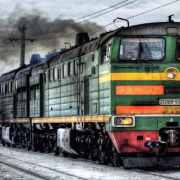Could Russia be importing US LNG soon?
/0 Comments/in Long Articles/by Rudolf HuberYeah, I know what you are going to say when reading the title. Now he has gone completely nuts. Russia has the biggest gas reserves on this planet. How on earth would imported US LNG ever make sense?
For the sake of the argument, I will not dwell on political considerations here. Some nations would burn cow dung rather than clean energy if it comes from certain countries. Even if they would save money doing so. Those situations are not exclusive to the US. They do exist pretty much anywhere on Earth.
But politics is never cheap, so I will stay out of it now. A very fitting example is the fuss about upcoming Israeli gas deliveries into Jordan.
In another post – some time ago – I had taken a long, hard look at the Russian upstream situation. I had concluded that Russia might not have the kind of gas Europe needs to sell anymore some years down the line. Their legacy fields are running out of steam. And the new ones under development are on the expensive side. Lifting the gas and selling it to Europe at current hub prices ought to be a money loser for the Russians.
Russia is Europe’s biggest gas supplier. Yet, those more than 100 BCM a year are a whiff when compared to the Russian domestic gas consumption. When I started working for a gas company more than a decade ago I learned about Russian gas use habits. They heat their homes with the windows open as gas costs close to nothing.
This has made Russia the second-biggest gas consumer on the planet. It’s gobbling up almost 500 BCM per year. Yet, the Russian economy is about as big as the Italian economy. And its population is only about as large as Germany and Italy combined. Still, it uses almost 10 times as much gas as Italy and still a whopping 4 times more per inhabitant.
No problem, you say, as they are so rich in gas.
But gas is not gas. The legacy fields in Western Siberia are running dry. They have been producing for about half a century now. Supergiant as they are, now they are a nearly spent force. The newer fields like Yamal’s Bovankovo are very different. The gas is much harder to lift. Ergo – it is much more expensive than the gas from long-ago written-off installations. Those were built when Project Finance was a dirty word and economics existed as chapters of the current 5-year plan.
Up to the recent past, Russia subsidized its internal gas market. It took revenues from sales to Europe to prop up gas consumption at home. But now, prices in Europe cannot cover the cost of extracting and transporting the gas. The windfall is gone so the subsidies must come from somewhere else.
Besides, rich Europeans don’t want to pay more for the expensive Russian gas as they have cheaper alternatives. How will poor average Russians be able to afford it?
This is a delayed double whammy if you have not noticed. Gas from legacy fields still comes out of the ground for almost nothing. The cash cow is still alive. It has suffered because of all the costs of developing new fields, but it’s not gone yet. So far, subsidizing the Russian take with steep revenues from the West is still on. Little-needed subsidies and cash flow from abroad are still healthy. Sort of.
Once the legacy fields are gone, gas is getting much more expensive to produce. Depletion should kick into high gear around 2022. This means bigger subsidies if they want to stave off a revolt by freezing Russians. At the same time, revenues from the West are meager or even nil. There is not only “no money” coming in but the internal bill swells out of proportion.
Russia will need to charge the true cost of production to its citizens. They need to do so to reign in consumption as otherwise, they will collapse.
I can imagine an extreme case where LNG from North America, landed in St. Petersburg, and is cheaper than gas produced in Siberia. Crazy? Let’s take a look at the odds.
Let’s imagine – for the sake of argument – that HH hovers back to 2,5 USD per MMBtu. Furthermore, US producers figure out how to lower liquefaction costs to one USD per MMBtu. Don’t tell me that’s not possible. We were at USD 1,50 a decade ago. Let us further assume that transport does not cost more than one USD per MMBtu. That gives us 4,5 USD per MMBtu plus the fee of the regasification terminal on top.
Now gas from Yamal costs us – oh, yes. Gazprom does not provide believable cost figures. Is there anyone who believes that it costs less than 4,5 USD per MMBtu to lift and process? Then there will still be a rather long pipeline from Yamal to a place that wants to pay a buck for it to cover. That’s pretty damn far from free gas.
I let you make your calculations. When Gazprom decided that Shtokman was not worth it some years ago, the gas price was double today’s. And still, they considered it was not worth it. Yamal is not Shtokman – I know that – but it’s about as nasty as it gets for gas exploration and production. It might well be that fracking and industrial production of unconventional gas are superior to the drilling casino.
Now a word of caution. I don’t prefer LNG over pipeline gas. To me, it’s all methane. US LNG (or any LNG for that matter) might be a better alternative than their gas for Russia. Yet, for political reasons alone, this is not likely to happen ever.
Yet, it’s always good to have on top of your mind that new Russian gas does not come out of the ground for free. Having the biggest gas reserves on earth is about as practical a value as the number of craters on the moon. It’s a nice academic figure. What’s important is what gas can be extracted, refined, and transported to what place at what cost.
In a moment, Russia’s mighty reserves morph into a vast collection of potential gas. Even Russians need to keep the most important rule of business on top of their minds. You need to make more than you spend. In other words, over the long term, the books need to balance. In whatever way that may come to pass.
Ah yes, all those telling me that US shale is, in reality, more expensive than what we see, there is a blog post upcoming on that so let me save my thunder for now.


















Leave a Reply
Want to join the discussion?Feel free to contribute!